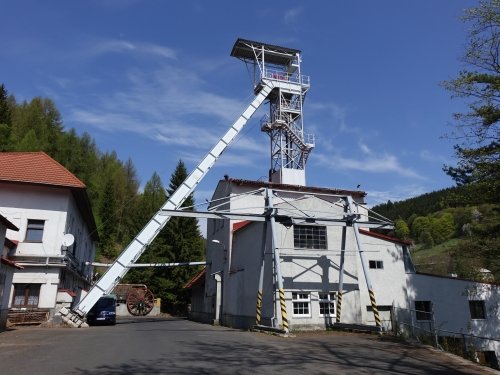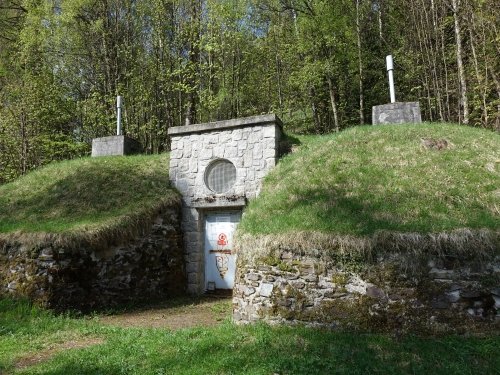In the east of Germany and just across the border in the northwest of Czechia lies a region called the Ore Mountains (
Erzgebirge
/
Krušnohoří
in the respective local languages). Its name comes from the ores (silver, copper, tin, zinc) that have been mined here over the centuries. The Germans and Czechs have been active since 2015 to secure a shared spot for this area at the World Heritage List, and they will possibly submit a revised nomination in
2019
. The proposal will consist of no less than 61 ‘component parts’ or locations.

Center of Olbernhau
At the German side, I checked out 3 locations in the Marienberg Mining Area: the city center of Marienberg, a reconstructed horse-driven mill in the Lauta Mining Landscape and the Grünthal Liquation Hut Complex in Olbernhau. Marienberg’s distinguishing feature is its large city square, designed in the style of the Italian Renaissance. I noticed little of further interest in the city centre, but I did pay a visit to the regional museum which is housed in a massive former granary from the early 19th century. The employees on duty seemed a bit shocked that I wanted to visit. The exhibition unfortunately mainly focuses on the traditional crafts and daily life in the region, not so much on the mining.
I can be brief about the second location on my list: the
Pferdegöpel auf dem Rudolphschacht
(Lauta) cannot be visited without a tour, and I had to wait another hour for one to start. So I drove straight on to the last location: Grünthal in Olbernhau. This immediately felt a lot better: a fast flowing river runs through the valley (always handy for the hydropower), and there is a lot of forest around (and therefore wood for the factory). Via a stone gate one enters a separate neighbourhood: this was the site where metals were extracted from ores. An old labourer's house and a small mining museum can be visited. At the museum I was put in front of a 25min video that showed its production process (including a lot of nostalgic GDR footage). From 1537, silver and later also copper were extracted and processed (to coins, for example). Later the Grünthal factory specialized in tin-plates, until it closed in 1990.

Svornost mine, Jachymov
The next day I drove across the mountains from Marienberg to the Czech part of this mining region. The first town after the (hardly distinguishable) border is called Jachymov. Jachymov has known mining since the 16th century: it grew to 18,000 inhabitants at the time, now there are only 2,700. At first the growth was based on silver, but since the 19th century uranium mining is typical of Jachymov. The remains of the old mines are still used to extract the radioactive radon for use in the local spa. During the communist period, political prisoners worked as forced labourers in these uranium mines.
In memory of them, an 8.5 km long trail has been designed along the remains of the mining industry and the prisoner barracks. It passes the still functioning Svornost mine and the mining open air museum (unfortunately closed until the summer season). The path continues through the forest, and I found it pretty demanding due to the large differences in altitude. Halfway I decided to take a shortcut back to Jachymov. Jachymov’s story is an interesting one anyway, and I found it the highlight of my trip to the Ore Mountains.

Along the Themed Trail 'Jáchymov Hell'
An inscription of the Ore Mountains would tick a lot of existing Connections, such as
Uranium mining
(Jachymov),
Mints
(Olbernhau, Jachymov),
Ideal City
(Marienberg) and
Thirty Years' War
(the Saigerhütte Grünthal in Olbernhau was raided by Swedish troops). Some of the proposed locations are interesting enough, but overall there are way too many of them scattered around a large area. Other reviewers have hinted that the tourist friendliness in the region could be improved as well, and that was also my experience. Especially after I just enjoyed the Omani hospitality this was a disappointment - as an independent and curious WH traveller, you’re almost seen as an intruder.



